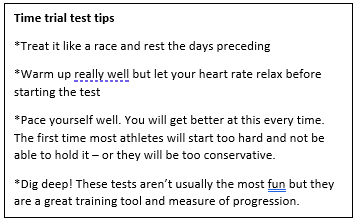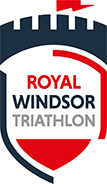Slow down to speed up | An intro to heart rate training
We all know that an active lifestyle will keep our hearts healthy and improve our general wellbeing. For those of us looking to get fitter, stronger and faster, we also know that an effective training plan will include workouts of different duration and intensity, all spread out to incorporate adequate recovery time.
As a triathlete, it is likely that you are already measuring the intensity of your sessions, either using pace, heart rate, power or your rate of perceived effort. Each method has its pros and cons, and of course, people have their personal preference as to which they think is the most effective approach. Most triathletes will use a combination of methods to measure intensity – often swimming by pace, cycling by power and heart rate, and running by pace and heart rate.
It is a complicated topic but we dug in to get to the heart of the matter. In short, tracking your resting heart rate and monitoring your heart rate when exercising, will help you get the most out of your training. Here is our intro guide to all things heart rate and why it may be a good approach for you.
The basics
Top-end endurance athletes will often have a heart rate around 40bpm: Former British cyclist Chris Boardman is said to have had a resting heart rate of just 38bpm, whilst 5 time Tour de France winner Miguel Indurain is famous for his incredibly low resting heart of just 28bpm.
You can monitor your resting heart rate by simply taking your pulse in the morning before you get out of bed. Check out the NHS guide to taking your pulse here. Most sports watches will also monitor your heart rate continuously and calculate your resting heart rate. A chest strap monitors your heart rate by recording electrical signals. Most studies show that it is the most accurate method, particularly during high-intensity exercise.
Avoiding illness and overtraining
Firstly, tracking your resting heart rate can be a useful tool to help you work out whether you are fighting illness or bordering on overtraining . Though everyone is different, a sudden increase in resting heart rate can mean that your body is dealing with an illness, stress from other areas of your life or that your training load is too high.
Sometimes our desire to train will overpower our better judgement and so it can be helpful to use heart rate as an objective marker. As Dr. Lotte Koopmans – medical doctor and pro mountain biker – explained in our article on illness and training “my resting HR is usually between 42 and 47 – anything over 50 often signifies illness, overtraining or tiredness. If in doubt, I rest.”
Maximising training time
Everyone is different but the average adult heart will beat between 60 and 100 beats per minute (bpm)*. As you get fitter, you will notice a drop in your resting heart rate. This is because your heart is stronger and more efficient so it needs to beat less to do the same job.
Secondly, heart rate can be an excellent tool in your training arsenal. For many of us, when we start out in triathlon, we want to go hard all the time, thinking this is the surest way of improving our performance come race day. This is a mistake. For triathletes who are looking to up their game, mixing up the intensity of your sessions is a sure-fire way to improve your fitness, strength and performance.
Most coaches use 5 zones, where zone 1 is recovery, 2 is aerobic, 3 is tempo, 4 is subthreshold and zone 5 is above threshold. Or in layman’s terms: really easy, easy, moderate, hard and all out. With genetics, physiology and lifestyle all having an effect on heart rate, it is important to work out your individual heart rate zones. For one athlete 150bpm could be zone 4 and for another athlete it could be zone 2, for example.
As a simple illustration, if you were to train in zone 5 all of the time, you would overtrain, exhaust yourself and quite simply not get as much training done. On the flipside, aerobic endurance sessions at zone 2 might feel like a walk in the park but they are making a number of positive physiological adaptions in your body, whilst keeping you fresh enough for the harder sessions. They also help you actively recover from intense efforts.
Heart rate is not a perfect metric. Heat, hydration, quality of sleep and emotional stress can all affect your heart rate and so you must bear this in mind when you see your pace is lower than normal for a specific heart rate. You will also start to get a feel for heart rate and zones so you almost don’t need to look at your watch.
How to calculate heart rate zones
There are two main ways of calculating your heart rate zones. The first is to calculate as a percentage of your maximum heart rate. The old-school way to calculate your maximum heart rate is 220 minus your age. You must use this as a guide, not as gospel though. If you are really keen, you could get a test in a sports science lab, for example at Loughborough or St. Mary’s Universities. These are not cheap however, so another way is to take your heart rate at the very end of a race where you are pushing to the max to get an estimate. Your aerobic zone 2 will be approximately 60-70% of your max heart rate.
The second method, and for many the preferred way, is to use your lactate threshold heart rate (LTHR). For example, zone 2 will be between 85% – 89% of your LTHR. It is complicated stuff but the simplest way to think about it is that your threshold is the point at which you switch from aerobic to anaerobic. No one could put it better than the master himself. Joe Friel, renowned endurance sports coach, cofounder of TrainingPeaks and author of several training classics, explains it well in his Quick Guide to Setting Zones:
“To find your LTHR do a 30-minute time trial all by yourself (no training partners and not in a race). Again, it should be done as if it was a race for the entire 30 minutes. But at 10 minutes into the test, click the lap button on your heart rate monitor. When done, look to see what your average heart rate was for the last 20 minutes. That number is an approximation of your LTHR.”

You can then use the figures he lays out here to calculate your zones. Remember your heart rate zones are likely to be different for your swim, bike and run and so it is good to do a test for each discipline.Of course, tech is not for everyone. The old-school way still works though if you don’t have the gadgets, or if you feel more relaxed without data. Running at zone 1 and 2, you should be able to have a full conversation, zone 3 you should be able to speak a sentence at a time, zone 4 you should be able to push out the odd word and zone 5 you shouldn’t even be thinking about talking..!
How to use heart rate zones to become a better athlete
Each coach and athlete will have specific combinations they prefer, whilst the amount you spend in each zone will depend on how new you are to the sport and whether you are in a base phase, a build phase or preparing to race. Many people swear by the 80/20 rule, where 80% of your sessions are at low intensity and 20% are at a high intensity. It is a good rule of thumb to start with if you are pencilling in your own plan.
Whatever the exact recipe, the key is to vary the intensities of your sessions and to make sure easy is easy and hard is hard! This is where heart rate comes in. Your heart rate zones give you a number to measure and aim for. It will feel strange at first, as though you are not working hard enough. Often athletes will not believe it until they see the results for themselves, asking “how could I possibly get faster by running this slowly?” Many find their ego gets in their way and don’t want to upload their zone 2 rides to Strava.
Heart zones can also help on race day. Knowing your FTHR and then keeping under that line for as long as possible will help you perform optimally over a longer course. You will know every time you go over that you are burning a match – no one has infinite matches no matter how fit you are!
Slow down to speed up
Many have used the long break in 2020 to reshape their training around an extended aerobic base phase. So, give it a try. Slow down for around 80% of your workout time and ramp it up for the remaining 20%. Discover the joy of running and cycling slowly. It is great for your mental health and you can really take in the world around you. The bonus is you also get faster.
Let us know how you get on! We would love to hear your stories of lockdown training.
* If you have any worries at all, please seek medical advice!
